
- Share this page
Share this page
- EN
Select Language
- FAVORITES
- Search
Detailed search: You can do a detailed search by keyword, genre, time, area and tag.
Main content starts here.
- Visit Tokyo |
- SPOT |
- Waterfront |
- Spectacular views from the dams of Tokyo
Updated: November 13, 2025
Spectacular views from the dams of Tokyo
The dams of Tokyo may not be the first place you think to visit, but head off the beaten track and away from the traditional tourist hot spots to see a very different side of Tokyo. Dams, lakes, reservoirs and rivers provide a thrilling setting to marvel at the scale of these man-made constructions set in the beautiful natural environment of Japan. Join the growing trend of “dam mania” in Japan, and appreciate the juxtaposition of human ingenuity and the beauty of nature.
Tips
- Take a walk around the reservoir lakes and appreciate the natural environment in whichever season you visit
- Enjoy the spectacular views from the observation tower at Ogouchi Dam
- Check out the unusual fish ladder at Shiromaru Dam
- Look for the copper-domed Water Intake Tower at Murayama Reservoir
Ogouchi Dam
Ogouchi Reservoir, commonly known as Lake Okutama, can be found about 5 kilometers to the west of Okutama Town center. Completed in 1957, this huge concrete dam has a height of 149 meters and a length of 353 meters. This is the largest reservoir in Japan exclusively for water supply, with a storage capacity of around 185 million cubic meters, which is why it’s also known as “Tokyo's Water Pot.”
Water from the reservoir is used to generate electricity and then discharged into the Tama River. It flows through a variety of waterways including the Ozaku and Hamura Intake Weirs as well as the Tamagawa Josui Aqueduct, before being purified and used as tap water.
Visit the Ogouchi Dam Observation Tower directly overlooking the dam for some great views. From the east side window you can enjoy a thrilling view of around 150 meters down to the river below.
You can learn more about the dam and the surrounding nature, as well as the history and folk culture of Okutama, at the Okutama Mizu-to-Midori-no-Fureaikan (Water and Green Friendship Hall), which also has a 3D theater, a shop with local specialties, and a Panorama Restaurant. Head further round the top of the lake for various observation decks and panoramic spots. You can enjoy the natural beauty of the area in all seasons, but the cherry blossoms in spring are particularly impressive.
There are various walking routes, including the Lake Okutama Ikoi Path which heads clockwise from the observation tower area around the edge of the lake. As you walk along, keep an eye out for the Mugiyama Pontoon Bridge or “floating drum can bridge” in the distance which connects the two sides of the lake.
Alternatively, the Okutama Mukashi Michi (Old Highway) is a popular hiking course which connects the Okutama Mizu-to-Midori-no-Fureaikan and Okutama Station on the JR Ome Line.
Note: Lake Okutama Ikoi Road may be closed due to inclement weather conditions, during winter or due to construction. Please see the Tokyo Metropolitan Government Bureau of Waterworks website for details.
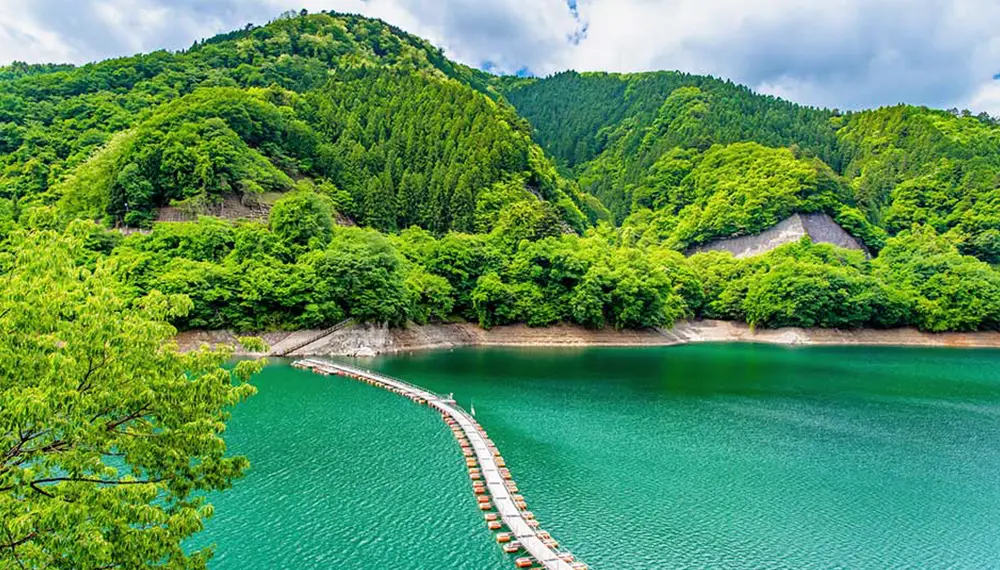
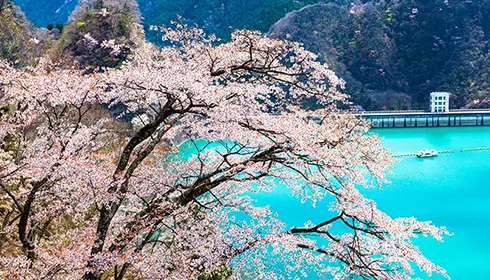 Cherry blossoms in spring, at Lake Okutama
Cherry blossoms in spring, at Lake Okutama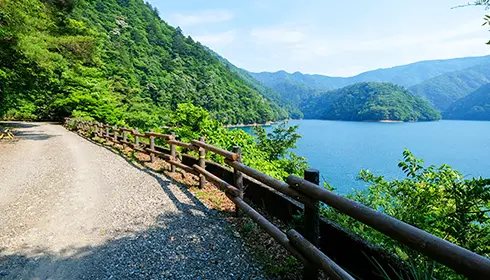
Shiromaru Dam
Further downstream, to the east of Okutama town, you’ll find Shiromaru Dam. It’s smaller than its Ogouchi counterpart, but also regulates the flow of the Tama River and is used to generate hydroelectric power. It started operating in 1963, and is around 30 meters high and 61 meters long, holding back a volume of around 14,000 cubic meters of water.
Its most notable feature is the Shiromaru Gyodo or fish ladder, an artificial waterway and tunnel which was constructed in 2001 to help migrating fish climb the 27 meters in height to the top of the dam. It’s 330 meters in length, with pools along the way for the fish to take a break on their journey. Take a closer look by descending the giant spiral staircase. Admission is free and it’s usually open on weekends and holidays from April to November.
Enjoy the natural surroundings of Lake Shiromaru, the reservoir created by the dam. You can also follow the Otama Walking Trail, a three-hour course from Okutama to Kori Stations, and enjoy the Tama River as it winds through the beautiful Hatonosu Valley. The scenery changes depending on the season you visit, but the autumn leaves are particularly spectacular.
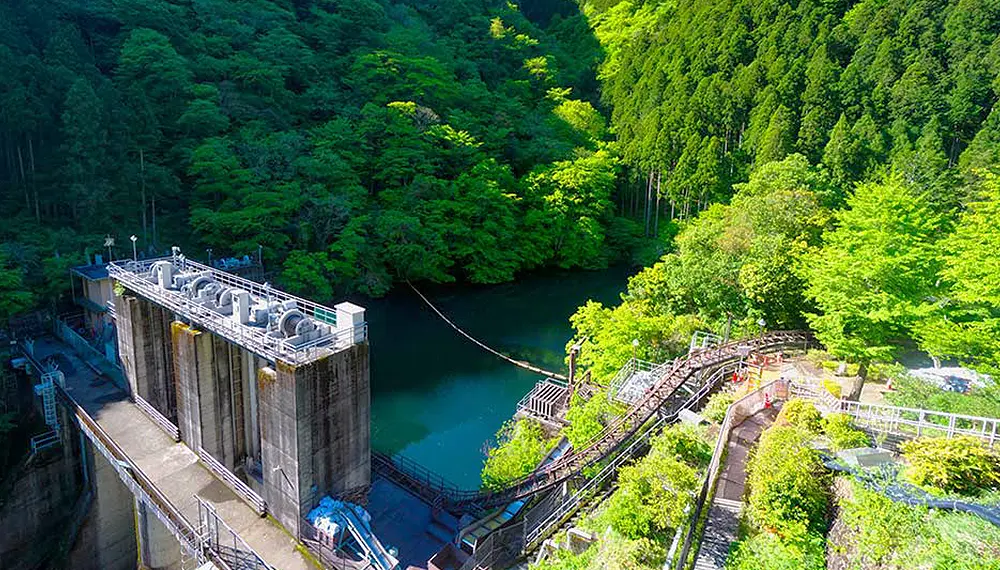
Shiromaru Dam
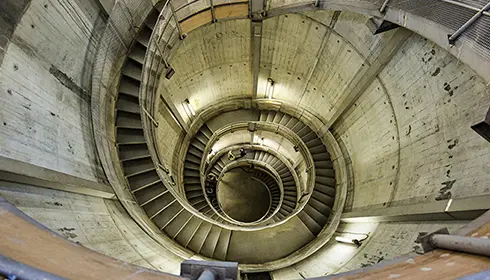 fish ladder at Shiromaru Dam
fish ladder at Shiromaru Dam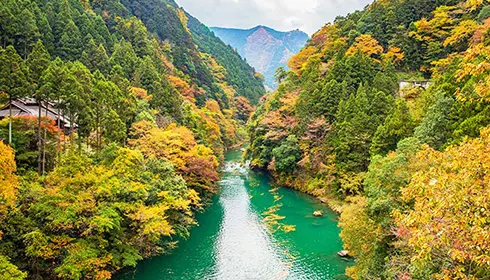 Lake Shiromaru
Lake ShiromaruMurayama Reservoir
Murayama Reservoir, also known as Lake Tama, is on the border of Tokyo and Saitama and consists of two parts, the upper reservoir on the west side and the lower reservoir on the east side. The source water is channeled from the Tama River, and it is connected to the nearby Yamaguchi Reservoir (Lake Sayama) in Saitama Prefecture by a connecting pipe.
The lower reservoir was completed in 1927, and its embankment is 34.5 meters high and 610 meters long. Surrounded by rich nature, you can see the mountains of Okutama and appreciate the changing seasons.
Keep an eye out for the Murayama Reservoir No. 1 Water Intake Tower, built in 1925 in a neo-Renaissance style, with its round domed roof with copper sheets, a tiled outer wall and arch windows.
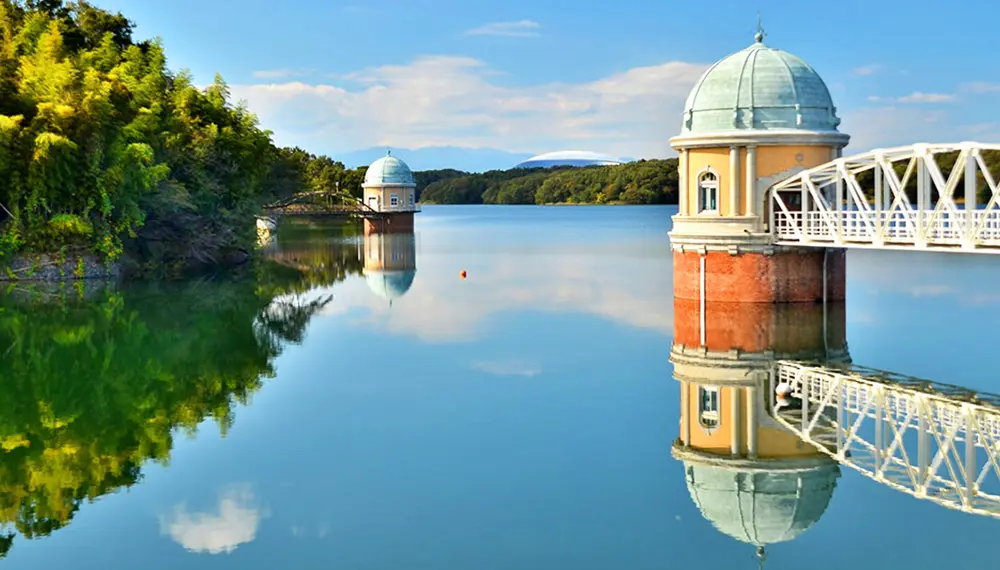
Murayama Reservoir No. 1 Water Intake Tower
Sayama Park on the east side of the reservoir is a pleasant green area with gardens, a pond, and walking paths, and is famous for its cherry blossoms in spring. There’s also a promenade on the top of the embankment and the cycling road around the lake.
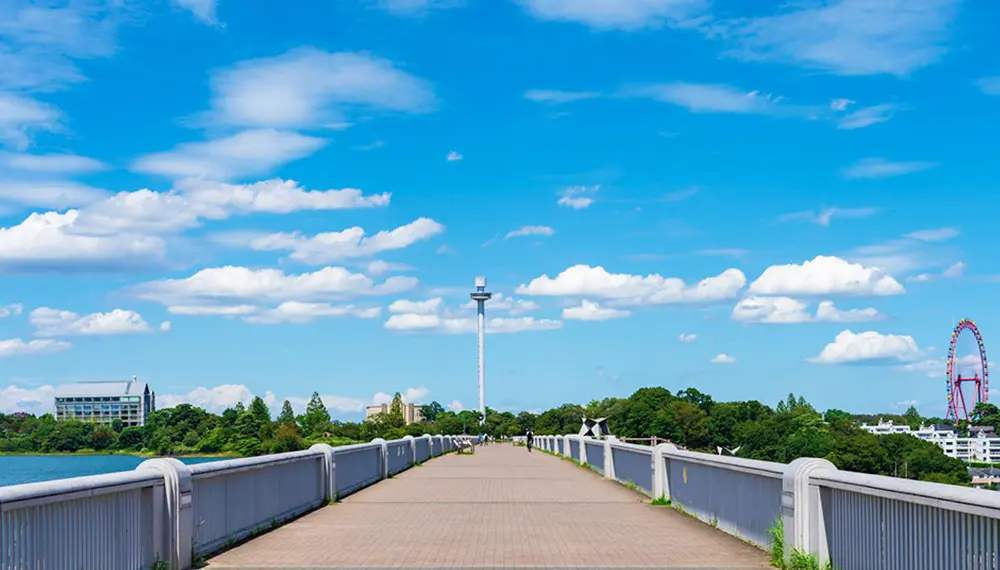
Reference Link

